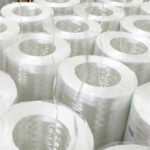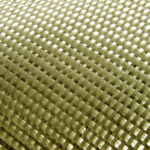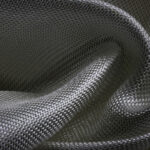Resin Transfer Molding Delivers Customizable Product Components
March 21, 2024Comparing Plastic Materials and Molding Processes for Your Next Project
October 15, 2024Fiberglass, aramid, and carbon fiber are three of the most common reinforcements used by composite manufacturers, and each reinforcement has a specific use depending on its application.
As a leader in custom plastics manufacturing and molding, Osborne Industries has decades of experience helping our customers understand the different reinforcement materials available for their products. We’ve collaborated with clients to produce custom composites that support everything from aerial lift platforms and agricultural equipment to parts for the medical and construction industries.
Choosing the right reinforcement material is critical to developing a reliable and long-lasting product. Fiberglass, aramid, and carbon fiber all have pros and cons to consider when planning your project.
Fiberglass
 Fiberglass is strong yet lightweight. It’s made of thin, intertwined glass strands, which are impregnated with polyester resin during the Resin Transfer Molding (RTM) process. Fiberglass is considered the most common reinforcement for composites.
Fiberglass is strong yet lightweight. It’s made of thin, intertwined glass strands, which are impregnated with polyester resin during the Resin Transfer Molding (RTM) process. Fiberglass is considered the most common reinforcement for composites.
As the name implies, fiberglass has characteristics of glass. It does not rust or absorb moisture and is a relatively affordable material to use in manufacturing. It’s versatility allows for use in components and parts like boats, pools, pipes, tanks, and much more.
Using fiberglass will result in a cost-effective, structurally strong product. Fiberglass has the lowest price tag of the three materials.
Aramid
 Aramid is a lightweight, synthetic fiber famous for its strength and resistance to impact and heat. These properties make it ideal for use in parts requiring ballistic protection.
Aramid is a lightweight, synthetic fiber famous for its strength and resistance to impact and heat. These properties make it ideal for use in parts requiring ballistic protection.
Despite aramid’s impressive heat-resistant characteristics, it’s sensitive to sunlight and can change colors. Without UV protection, parts can even begin to degrade with too much UV exposure.
Using aramid will result in a lightweight but strong and durable product. Aramid is usually more expensive than fiberglass but less expensive than carbon fiber.
Carbon Fiber
 Carbon fiber, composed of thin carbon filaments, has the highest material strength and strength-to-weight ratio of the three materials. It’s also the most rigid. Carbon fiber is frequently used in the manufacture of electronic, aerospace, automotive, sport, and drone components.
Carbon fiber, composed of thin carbon filaments, has the highest material strength and strength-to-weight ratio of the three materials. It’s also the most rigid. Carbon fiber is frequently used in the manufacture of electronic, aerospace, automotive, sport, and drone components.
The impressive features of carbon fiber, however, come at a cost: carbon fiber is typically the most expensive of the three materials. In addition, carbon fiber’s stiffness can cause it to break easily if excessive pressure or impact is applied.
Choosing the Best Material for Your Project
Deciding whether to use fiberglass, aramid, or carbon fiber comes down to your project’s unique requirements. If strength-to-weight ratio is most important and budget allows, carbon fiber is a great choice. Aramid works great in a scenario requiring high performance and impact resistance. For a product dependent on versatility and cost-effectiveness, consider fiberglass.
If you have questions about which reinforcement materials to use in your next custom molding project, contact us today!


